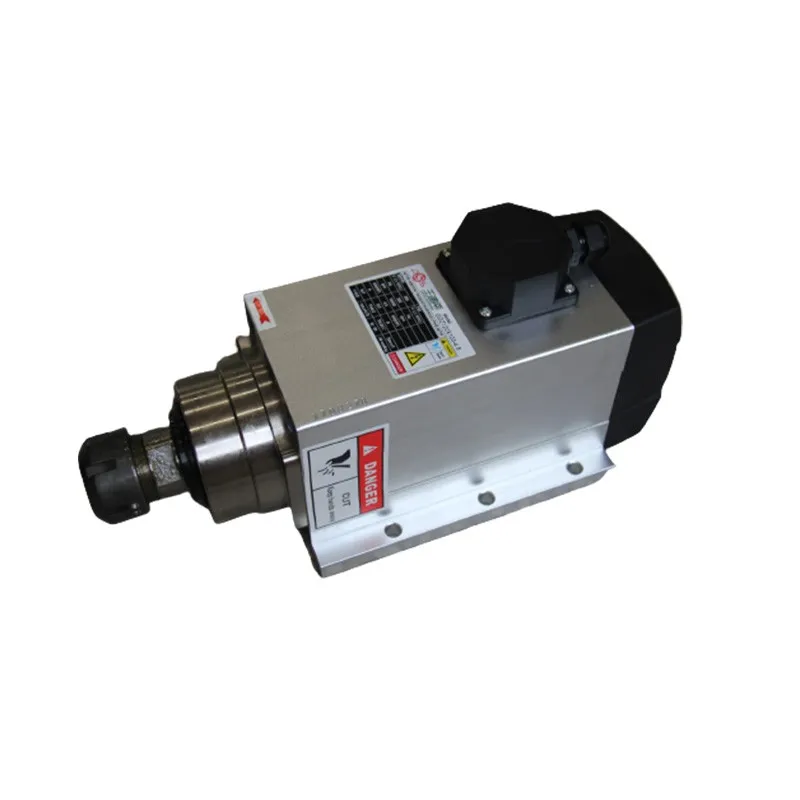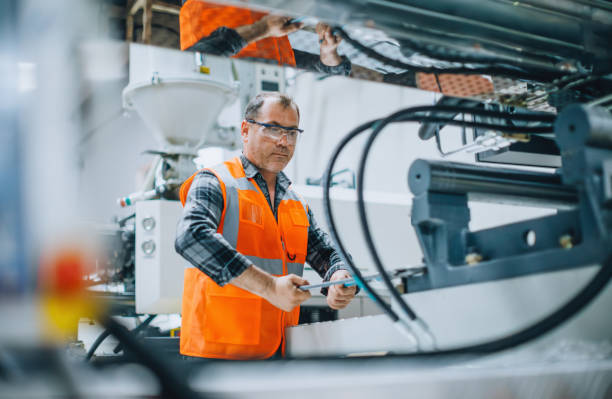How to Make a CNC Machine
If you’ve ever wondered how to make a CNC machine, you’re in the right place. A CNC machine—short for Computer Numerical Control—is a powerful tool that allows you to create complex and precise parts out of materials like wood, metal, and plastic. For hobbyists, makers, and small business owners, having a homemade CNC router can open up endless possibilities for creativity and productivity. In this comprehensive guide, we’ll walk you through the step-by-step process of building a CNC machine, from planning to assembly, with helpful tips along the way.
What Is a CNC Machine?
A CNC machine is a type of machine that uses pre-programmed software to control the movement of tools to cut or carve materials. Unlike traditional machines that require manual operation, CNC machines are automated, allowing you to achieve high precision and repeatability. These machines can be used for woodworking, metalworking, plastic crafting, and more.
A homemade CNC router typically includes several essential components:
- Stepper Motors: Control the precise movements along each axis (X, Y, Z).
- Ball Screws and Linear Rails: Ensure smooth and precise linear motion.
- Motor Mounts and Side Plates: Hold the stepper motors in place and provide structure.
- Spindle: The cutting tool that removes material.
Using a CAD program (Computer-Aided Design), you can create digital designs and export toolpaths, which tell the machine exactly where and how to cut.
Planning Your Homemade CNC Machine
Define the Purpose and Size
The first step in building your CNC machine is deciding on its purpose. Do you want to work with wood, metal, or plastic? The materials you plan to work with will determine your machine’s frame, spindle power, and cutting bed size.
- Size: Determine the size of your cutting area, which is referred to as the cutting bed. For larger projects, a bigger cutting bed is necessary, but this also requires a more robust structure.
- Budget: The cost to build a CNC machine at home can vary from a few hundred to a few thousand dollars. To keep costs low, choose materials wisely and consider what parts you can reuse or source at a lower price.
Creating a CAD model or sketch of your CNC machine is an excellent way to visualize the design. This helps in planning the layout, dimensions, and component placement effectively.
Essential Components for a CNC Build
Building a CNC router requires gathering the right components. Here’s a list of the essential parts you’ll need:
| Component | Description |
|---|---|
| Stepper Motors | Control movement along each axis. |
| Ball Screws | Convert motor movement into linear motion. |
| Linear Rails | Provide smooth linear motion with accuracy. |
| Spindle | The cutting tool for material removal. |
| Frame | Base structure, typically made of aluminum. |
Selecting high-quality parts ensures the accuracy and durability of your machine. For instance, you can find a variety of spindles like the 2.2KW ER16 Air-Cooled Spindle at SpindleMotorShop, which is perfect for beginners looking for versatility.

Choosing the Frame Material
The frame serves as the foundation of your CNC machine, ensuring that it remains stable during operation. Here are the typical materials used:
- Aluminum Extrusions: Lightweight, easy to work with, and very strong. Aluminum is a popular choice for hobbyists.
- Steel Tubing: Provides excellent rigidity, but it’s also heavier and can be challenging to work with if you lack welding equipment.
To construct a reliable frame, use aluminum extrusions for ease of assembly, paired with M5 bolts and drilled tapped holes for structural integrity. This combination strikes a balance between weight, cost, and rigidity.
Step-by-Step Guide to Building a CNC Machine at Home
1. Constructing the Frame
The frame is the most fundamental part of your CNC machine, providing the base to which all other components attach. Here’s how to go about it:
- Cut the Aluminum Extrusions: Start by cutting your extrusions to the appropriate lengths based on your design.
- Bolt Together: Use M5 bolts to secure the pieces. Ensure that all connections are tight and aligned.
- Check for Squareness: A frame that is not square will lead to inaccuracies in your cutting process. Take your time to align and re-check before tightening everything.
A well-built frame ensures precision and repeatability during cutting, which is crucial for achieving professional results.
2. Installing Linear Rails and Ball Screws
After constructing the frame, the next step is to install the linear motion components, including linear rails and ball screws.
- Linear Rails: Attach linear rails to the frame, ensuring they are perfectly aligned. These rails are critical for guiding the moving parts accurately.
- Ball Screws: Install the ball screws along each axis. These components convert the rotary motion of the motors into linear motion, providing precision.
Be sure to install bearing blocks and ball screws parallel to each other to prevent binding or misalignment, which could hinder the smooth operation of the machine.
3. Mounting the Stepper Motors
The stepper motors are responsible for the precise control of each axis of your CNC machine.
- Motor Mounts: Use motor mounts and side plates to attach the stepper motors to the frame securely.
- Motor Couplers: Connect each motor to its corresponding ball screw using motor couplers. These couplers often have a flexible element that compensates for slight misalignments.
Each motor should have a dedicated driver, and your setup should include a power supply that matches the voltage and amperage requirements of your motors. This ensures they can operate effectively and provide sufficient torque.
4. Setting Up the Spindle
The spindle is the heart of your CNC machine, responsible for cutting the material. Here’s how to set it up:
- Mount the Spindle: Secure the spindle to the Z-axis using a dedicated spindle mount. It must be aligned properly to prevent errors during cutting.
- Cooling System: For water-cooled spindles, you’ll need a water circulation system. Air-cooled spindles are simpler, but they might be noisier.
A powerful spindle, such as the 4.5KW Air-Cooled Spindle with Flange, is suitable for cutting harder materials like aluminum.

5. Electronics and Wiring
Once the spindle is set, it’s time to install the electronics.
- Controller Board: The controller board acts as the brain of the machine. It reads the G-code and translates it into movements. Popular boards include GRBL and Mach3.
- Power Supply: Your power supply should be robust enough to power both the spindle and the stepper motors.
- Stepper Motor Drivers: Connect each motor to a driver, and link the drivers to the controller board. Proper wiring and grounding are critical for avoiding noise and signal issues.
Take time with wiring—mistakes can cause faulty movements or even damage components.
Software Setup for CNC Machine Control
CAD and CAM Software
To operate a CNC machine, you need software that can handle both design and toolpath generation. Typically, this involves CAD (Computer-Aided Design) and CAM (Computer-Aided Manufacturing) software.
- Fusion 360: Combines both CAD and CAM in one package, making it very convenient.
- VCarve: Ideal for woodworking and simple operations. It provides user-friendly tools for creating efficient toolpaths.
Once your design is complete, it is converted into G-code, a language that CNC machines understand. The G-code tells your machine where to move, how fast, and when to engage the spindle.
Sending the G-Code to Your Machine
To send the G-code to your CNC machine, you’ll need software such as Universal G-Code Sender (UGS).
- Load the G-code File: Start by loading your G-code into UGS.
- Run a Test Cut: It is advisable to do a dry run (without actually cutting) to make sure there are no errors in the movement paths.
For beginners, Easel by Inventables is another great option due to its simple interface and ease of use.
Testing and Calibrating Your CNC Machine
After assembly, it’s essential to calibrate your machine to ensure that it operates accurately.
- Run Test Movements: Test the X, Y, and Z axes to confirm smooth and accurate movement.
- Test Cut: Start with simple materials like MDF for your first cuts to see if the machine is functioning properly.
- Adjustments: If there are inaccuracies, adjust the spindle speed, feed rate, or motor tuning until the cuts are clean and precise.
Calibration takes time, but it’s necessary for ensuring the machine works correctly. You may need to tweak the ball screws, motor settings, and alignment until everything is just right.
Tips for Successful CNC Building
- Invest in Quality Components: High-quality ball screws, bearings, and spindles will greatly affect the accuracy and longevity of your CNC machine.
- Precision in Assembly: Take your time to align everything correctly. Poor alignment can lead to significant errors during the cutting process.
- Use a Suitable Workspace: Make sure you have enough room to work comfortably. A well-organized space makes the assembly process smoother and more enjoyable.
Frequently Asked Questions (FAQs)
1. How much does it cost to build a CNC machine at home?
Building a CNC machine can range from $500 to $3000 depending on the quality of parts and the machine size. Reusing components and sourcing parts wisely can help reduce the cost.
2. Can I use a router instead of a spindle for my CNC?
Yes, a router can be used instead of a spindle. However, spindles offer better speed control and are usually quieter, making them a preferred choice for precision work.
3. What kind of software do I need to operate a CNC machine?
You’ll need CAD software for designing parts, CAM software for creating toolpaths, and a G-code sender like Universal G-Code Sender (UGS) to communicate with your CNC machine.
4. How can I ensure my homemade CNC router is accurate?
Careful calibration is key. Ensure all components, like linear bearings, ball screws, and frame, are properly aligned and tuned. Regular maintenance will also help keep the machine accurate.
5. What are the primary components of a CNC machine?
The core components are the stepper motors, spindle, ball screws, linear rails, and controller board. Together, these allow the machine to operate with precision.
Conclusion
Building your own CNC machine is an empowering experience that combines engineering, creativity, and craftsmanship. By following this comprehensive guide and selecting the right components—such as high-quality ball screws, stepper motors, and spindles—you can create a versatile machine capable of cutting, carving, and engraving with precision. Take the time to plan, source quality parts, and calibrate carefully, and you’ll have a CNC machine that meets all your project needs.
If you’re looking for reliable CNC components, such as spindles and other parts, be sure to check out SpindleMotorShop for a wide selection that can help you get started. Remember, the journey of building your CNC machine is as rewarding as the final product, providing not just a tool but also invaluable hands-on experience.

